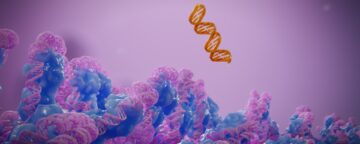Drug prevention strategies for adolescents often focus on early prevention, because drug use before age 15 has been found to predict later drug addiction. But a new study finds that early drug use strongly predicts substance abuse only if it’s followed by continuing drug use and that early experimentation with alcohol or marijuana is not necessarily a risk factor for later addiction.
The findings, to be published in the journal Addiction and posted online, challenge dominant drug prevention strategies for adolescents that focus on preventing early onset of use.
Instead, the research finds that adolescents with weak working memory and strong impulsive tendencies are at risk for substance abuse whether they start early or later, suggesting that drug-prevention strategies that focus disproportionately on early users will miss those that start later.
Researchers from the Annenberg Public Policy Center (APPC), the University of Oregon, and Children’s Hospital of Philadelphia collected data from 387 Philadelphia-area children over eight years, starting from 10-to-12 years old. The adolescents were asked about their use of alcohol, marijuana and tobacco. Youth who started and then continued to use all three drugs during adolescence were more likely to progress to later substance use disorder, or SUD.
The researchers identified predictors of SUD that could be used to screen adolescents at risk for continued drug use, either early in adolescence or later. Young people showing weakness in a type of cognitive ability called working memory and strong impulsive tendencies were at a greater risk of both drug-use progression and later SUD, the study found.
Working memory refers to the ability to concentrate on a task without being easily distracted. Youth with weak working memory tend to have problems controlling their impulses and thus appear to be at greater risk of continuing drug use.
Prevention needed in high school, too
“Substance use disorders are a major public health concern in this country,” said lead author Atika Khurana, of the Department of Counseling Psychology and Human Services at the University of Oregon. “Our study advances the field by showing that just addressing early use is not going to solve the problem,” said Khurana, an APPC distinguished research fellow who began working on the long-range study as a postdoctoral fellow at the policy center.
“Drug prevention strategy in the schools typically focuses on middle school, when early drug use tends to take place, and assumes that any drug use at all is a problem,” said co-author Dan Romer, research director of the Annenberg Public Policy Center of the University of Pennsylvania. “This study suggests that prevention needs to be more nuanced. The risk depends on whether drug use is likely to progress.”
The researchers suggested that interventions should focus additional resources on youth based on their self-reported difficulties in controlling their behavior, types of impulsivity that are related to weak working memory ability.
An example of another strategy that misses the mark is random drug testing of middle and high school students. These tests may identify youth who are consistent users of drugs but may also find those who are experimenting with a drug such as marijuana, which leaves a biological signature that is detected even for light users. This procedure is likely to uncover infrequent as well as frequent users, when the real risk is among those who are using both alcohol (which is not detectable) and another drug such as marijuana.
“A more effective strategy would be to screen youth with a confidential measure of self-reported drug use as well as measures of other risk factors, such as impulsive tendencies,” Romer said. “Youth who report both repeated drug use and impulsivity could then be offered counseling to help them avoid later problems with addiction.”
The study used four annual waves of data (2005-2010) from Philadelphia-area adolescents, with a final wave of data gathered through a follow-up in 2012. The study was based on self-reports and corroborated in the follow-up by drug screening for marijuana and nicotine.
Prior research with the same group of youth found that working memory and impulsivity were predictors of other risky behaviors, such as early and unprotected sexual activity:
- Stronger working memory and reduced sexual risk-taking in adolescents (2015)
- Experimentation vs. progression in adolescent drug use (2014)
- Weakness in working memory predicts progression of alcohol use in early adolescents (2012)
The study, “Working Memory Ability and Early Drug Use Progression as Predictors of Adolescent Substance Use Disorders,” was posted online in advance of publication in Addiction. It can be found here.
In addition to Romer and Khurana, the study authors are Laura M. Betancourt and Hallam Hurt of the Children’s Hospital of Philadelphia. The research was supported by the National Institute on Drug Abuse (NIDA). The content is solely the responsibility of the authors and does not necessarily represent the official views of the National Institutes of Health or or NIDA.
To download this news release, click here. The University of Oregon news release is here.


